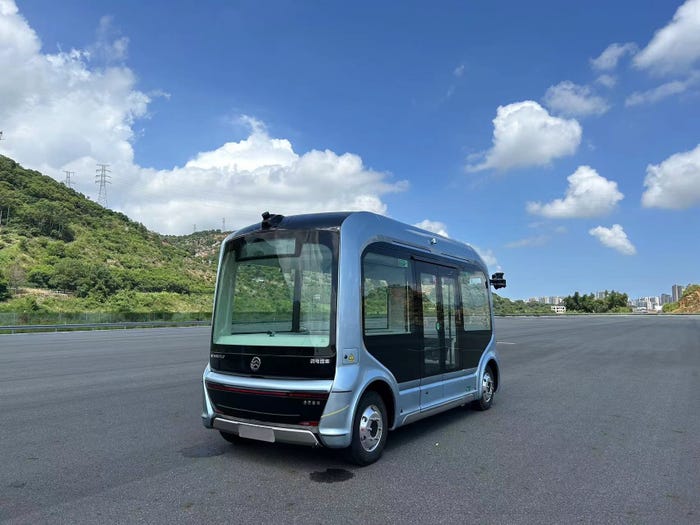Scale Your IoT Architecture with AI at the EdgeScale Your IoT Architecture with AI at the Edge
Once primarily cloud-based, IoT architecture is moving steadily to the edge.
October 4, 2019

By Ripal Vyas
Thanks to the proliferation of IoT devices, enterprise data volumes are exploding. Traditionally, the sensitive data IoT devices gather has largely been stored in the cloud. But given the latency between data centers and end-users, that arrangement is becoming untenable. When dealing with pressing operational needs, organizations can struggle to rely on remote servers to process their data. Cloud data security is a further complication. Given these concerns, it’s no wonder many enterprises are looking to the edge. That is, they need to process data locally to support real-time decision-making. In essence, they need faster processing than the cloud allows.
AI and Edge: An Emerging Paradigm for IoT Applications
The next-generation of employees doesn’t like to wait around. They want those devices to make decisions sooner rather than later. But the need to process data with minimal latency isn’t just a matter of impatience. In the case of autonomous vehicles, as well as many medical and industrial applications, the need for IoT systems to make automated decisions as quickly as possible is a necessity.
Edge computing technology conforms with these expectations. It enables seamless data collection from IoT devices and associated storage and analytics. In addition, it supports real-time decision-making locally.
AI at the edge uses a compact architecture, yet it offers a powerful computing approach that works to drive local data-informed decision-making. The smarter an edge device is, the more expensive it would be, but at the same time, it can process and store enormous amounts of data locally, reducing the need to do so elsewhere.
Edge computing is thus applicable for enterprises internationally. According to Tractica projections, AI edge device shipments will increase from 161.4 million units in 2018 to 2.6 billion units worldwide annually by 2025.
Some common AI-enabled edge devices, in terms of unit volumes, are head-mounted displays, smart automotive sensors, consumer and commercial robots, drones and security cameras. Edge computing also can extend to encompass the processing power of PCs and tablets, mobile phones and next-gen smart speakers. Already, big players such as Microsoft, Google, Amazon and others have heavily invested in experimenting with solutions for AI-enabled edge computing solutions.
Why Deploy the AI Model on Edge Devices?
There are several reasons to consider deploying an edge-computing model:
1. It Provides a Real-Time Response, Avoiding Latency Issues
With edge computing, there is no need to transfer data to the cloud for processing; hence, the issue of latency does not exist. This fact accelerates the real-time decision-making of an enterprise. For some applications such as airplane monitoring, medical imaging, autonomous driving and others, real-time response is crucial as AI-based decisions are made according to the real-time performance of IoT machines.
2. It Makes Operations More Reliable
Edge computing enables users to store, process and derive intelligence from data locally. As a result, a robust IoT solution can be built on-premises. Also, quick decisions about processes, operations, machine health and other variables can be made seamlessly without connectivity issues. With real-time information from edge computing, AI can ensure continuous processes by preventing sudden machine failures or breakdowns. Moreover, the parameters that identify when predictive maintenance is necessary are integrated into the IoT solution.
3. It Ensures Greater Security by Enhancing Risk Management
By avoiding the security threats of the public cloud, edge computing keeps sensitive data in the local IT ecosystem. Additionally, an AI-enabled solution can detect anomalies at the edge of the network. If cyber attackers try to access the network by targeting IoT devices, defenders can rapidly implement mitigation techniques. AI-driven risk analysis identifies all the probable points of entry for cyber attackers and proactively create plans to mitigate security problems.
The Final Say
Earlier, powerful AI apps required a massive and expensive datacenter to function, but an AI-enabled edge computing device can reside practically anywhere. This fact does not mean that edge computing will be a replacement for cloud computing. With the digital world becoming more interconnected, however, real-time intelligence will shift to the edge. It is undeniable that AI at the edge offers endless opportunities that can help enterprises to more efficiently drive operations and increase productivity.
Ripal Vyas is the founder and president of Softweb Solutions Inc., an Avnet Company. He has been instrumental in bringing the latest technologies to the Midwest over the past 12 years at his Chicago-based firm. Vyas is now raising awareness on the importance of IoT, deep learning, AI, advanced data analytics and digital experiences across the U.S. at his new base in Dallas.
You May Also Like






